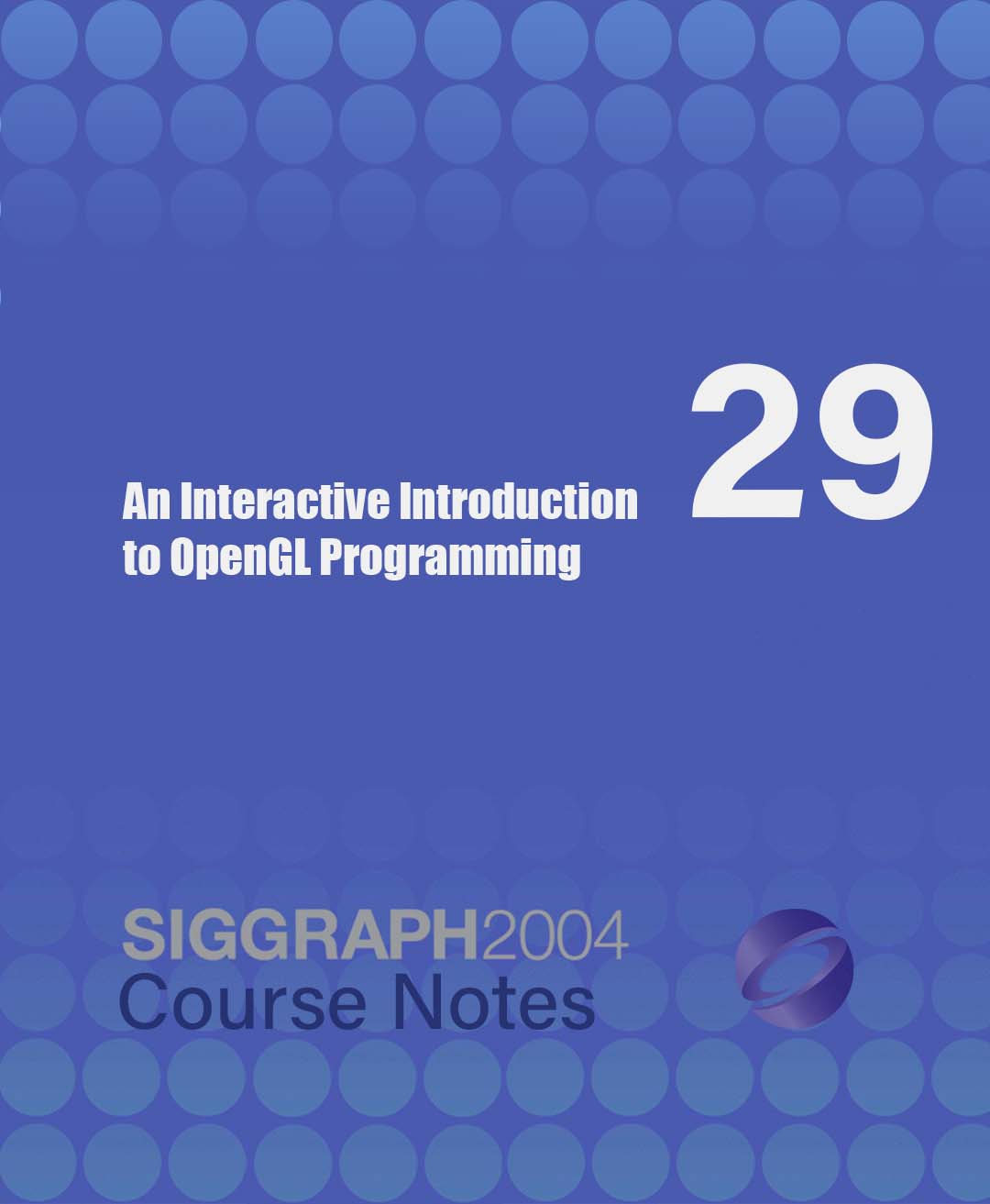“An Interactive Introduction to OpenGL Programming” by Shreiner, Angel and Shreiner
Conference:
Type(s):
Title:
- An Interactive Introduction to OpenGL Programming
Organizer(s):
Presenter(s)/Author(s):
Entry Number: 29
Abstract:
Prerequisites
Attendees should be able to read simple programs written in the C language. The course presents concepts from linear algebra (vector notation and matrix multiplication), but knowledge of those subjects is not required.
Intended Audience
Anyone interested in learning how to author applications using OpenGL. Attendees will learn enough to write interactive OpenGL applications with moving, lit, textured 3D objects.
Description
OpenGL is the most widely available programming library for computer graphics applications and is used in almost every aspect of computer graphics: research, scientific visualization, entertainment and visual effects, computer-aided design, interactive gaming, and many more. This course provides an accelerated introduction to creating applications with the OpenGL application programming interface (API).
The course introduces OpenGL’s operation through more than just code snippets and static images. It utilizes several applications that introduce various subsets of the OpenGL API (for example, lighting or texture mapping), so participants can interactively modify the values passed into OpenGL and immediately see the resulting images.
The course takes a beginning OpenGL programmer from the basics of what’s required for OpenGL’s operation to advanced topics like using the stencil buffer and programming with OpenGL extensions. Along the way, it reviews the most-used features of OpenGL and how to utilize those in applications.
Topics include how OpenGL represents geometric objects; how lighting, texture mapping, anti-aliasing, and other supported features are applied; and how to use pixel images in the context of elementary image processing; and how to use imagery for texture maps. Advanced topics not appropriate for detailed discussion in an introductory course are introduced with references for further study.





